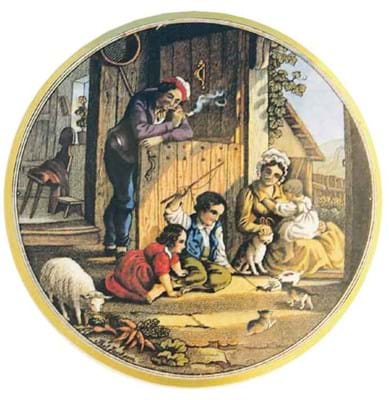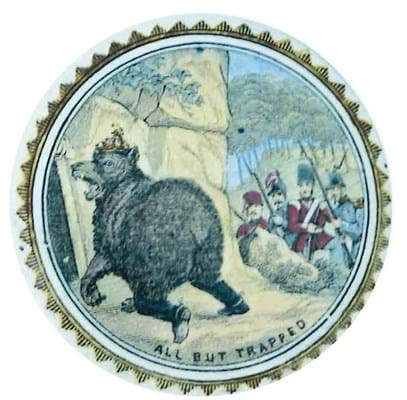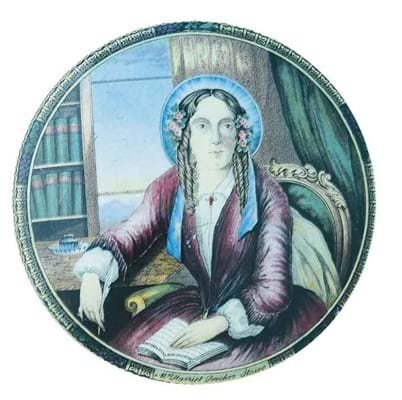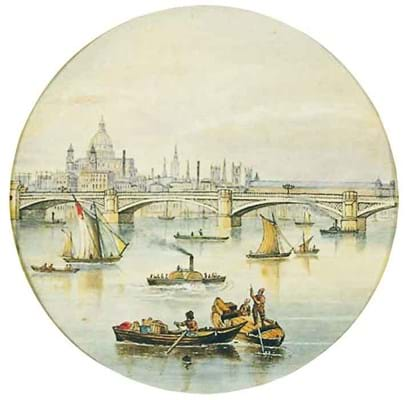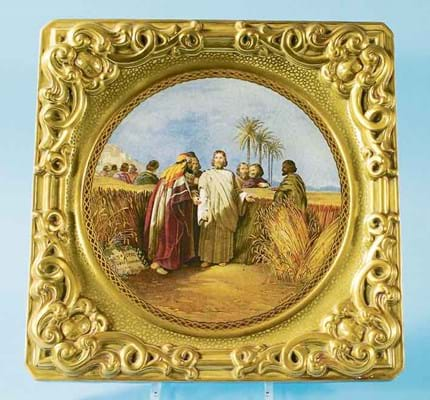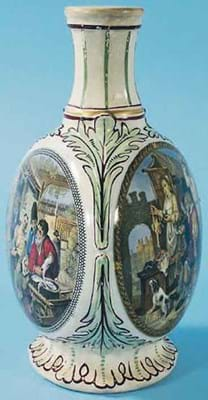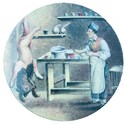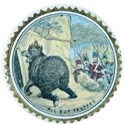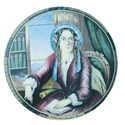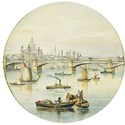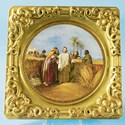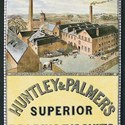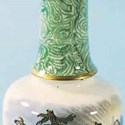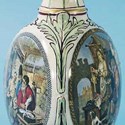But he also led another life as a leading collector of Prattware and pot lids.
With sales held since 1924 to supply an eager audience of wealthy industrialists from the Midlands, pot lids must rank among the longest-standing collectable ceramics. Mr Crowther was introduced to the subject in the 1950s and, after becoming an early member of the Pot Lid Circle in the mid-Sixties, became the group's president until his death in 1996.
Since then, his wife Jean, who shared his passion, has occasionally added trophy purchases to the collection but her recent decision to disperse nearly 1000 pieces back into the collecting community has provided Special Auction Services with another opportunity to test the deepest waters of the market.
Offered in a single catalogue in two parts (using the 'A' and 'B' lots that collectors like), the first tranche was sold to an audience of more than 100 on the first Saturday in June.
Every one of the 491 lots found a buyer.
There are about 550 different pot-lid picture subjects - their price determined by rarity, size, border design, quality of execution and crossover appeal - and the Crowther collection included some well-known trophy lids.
Among them were Our Home, a large 4in (10.5cm) F&R Pratt lid printed with a rustic scene of rural bliss by Jesse Austin which is more commonly known in a slightly smaller lid that carries a four-line verse. Thought to be an experimental sample - it also carries the Pratt/Prince Albert stamp usually only seen on the decorative wares - the lid offered at Midgham was first encountered by Andrew Hilton in 1978 when working at Phillips.
Then, at what subsequently proved to be the top of the market, the discovery of an apparently unique lid in such fine condition had prompted a record-breaking £2600 from collector Richard Cashmore.
When his collection was sold in November 1998, it was bought by Mrs Crowther at £4000, again a new record.
Here, underlining some consistency at the top end of the market (if no growth) it was sold again at £4000 to a collector building upon his grandfather's collection of pot lids.
Bear's Grease
Another of the 'find another' lids in this collection was the Bear's Grease Manufacturer - a grisly interior scene of a butcher preparing a partly skinned bear carcass.
Surprisingly at the time it was not a best-seller. There are three equally rare variants of this small-sized lid thought to have been produced by T.J & J. Mayer c.1850. One has a double-line border with the lettering Clayton & Co.'s Real Bear's Grease, 58, Watling St, London to the rim (an example with a small rim chip was sold at a then-record £3800 by SAS as part of the Abe Ball collection in 1996). Another, also with lettering, has a coloured marbled border (Ken Smith's example with a restored flange made £2900 in 2000). The Crowther example had no lettering and was restored, having at one point been in two pieces.
Nevertheless, it trebled expectations to bring £3000.
Lids relating to bear's grease, the all-purpose product used by the Victorians in cooking, rifle cleaning, leather and boot waterproofing, as a skin cream and hair restorer, were among the sale's strongest suits.
With a hairline crack (condition was not always a great concern for Leslie Crowther), Bear Hunting, a medium-sized version of this lid with the Ross & Sons, Bishopsgate lettering and a blue and black chequered border, sold at £440, the same price as Arctic Exhibition in search of John Franklin, a scene also known from a Baxter print that related to a bear attack of 1850.
Also restored, but selling at £850, was All But Trapped, a Mayer lid with obvious allusions to the Crimean War. This example, showing the Russian bear cornered by British forces and their French and Turkish allies, was in the more desirable fancy border.
The conflict in the Crimea loomed large in the mid-1850s and a large number of pot lids and Prattware reflect the national consciousness.
Among other rarities is The Redoubt, Inkerman, a print seen on decorative wares (and only a handful of lids) c.1855 which was reissued in the 1880s and later.
The example at SAS was a very large 5in (13cm) diameter lid, thought to be an early reissue. It lacked the pearly glaze, the fine potting and the fine craquelure of the earliest lids but was better quality that the lids produced under Keeling and Co., after the 1890s. It sold at £680.
Pot Lid Rarities
With obvious crossover appeal the 5in (13cm) diameter lid Wellington wearing a cocked hat, a restored example with the birth and death dates to the border, sold at £440 while a portrait lid depicting anti-slavery campaigner Harriet Beecher Stowe (1811-1896) sold at £1200, despite a hairline crack.
Significantly, this hard-to-find image of the author of Uncle Tom's Cabin sold to an American collector of slavery-related collectables.
Two rare and attractive floral lids (there are more than 30 in all of these make-up containers) also proved particularly popular.
Retaining its marbled base marked for the retailer J. Gosnell & Co., London, a large lid printed with a vase of garden blooms (Abe Ball catalogued it as 131/7) sold at £440, while a small lid (131/30) showing a vase of flowers and a mirror - an exceptionally good print - went at £650.
While some of the more pedestrian Prattware tablewares remain eminently affordable - pairs of plates in common patterns are still no more than £15-20 each - there was strong competition for some rarities.
Superb-quality printing characterised a small number of lids and plaques produced for the Great Exhibition of 1851 - an early high point for the products of F&R Pratt. Bearing the Pratt/Prince Albert stamp, a square plaque boldly moulded with scrolling spandrels around the print Christ in the Cornfield was purchased by a descendant of Felix Edward Pratt (1813-1894) at £1900, £100 more than it had made as part of the Ken Smith sale of 2001.
Particularly sought-after was a tricorn Soyers relish vase decorated with The Poultrywoman and The Fishmarket which made £1700 (estimate £300-400), and a rare clubshaped vase decorated with a green marbled neck and the prints Uncle Tom and Eva and Uncle Tom which sold to a UK collector at £2000 (estimate £500-700).
The latter price compared to an arguably better example which made £550 as part of the Ball collection.
Leslie Crowther also had two of the much-coveted large rectangular plaques loved by advertising memorabilia collectors.
One made for Crosse and Blackwell will be offered later but here a Huntley & Palmer's Superior Reading Biscuits plaque with its pictorial of the factory's smoking chimney stacks sold at a predictable £3800 (estimate £2000-3000).
The second part of the Crowther collection will be sold on September 11. Come on down…

